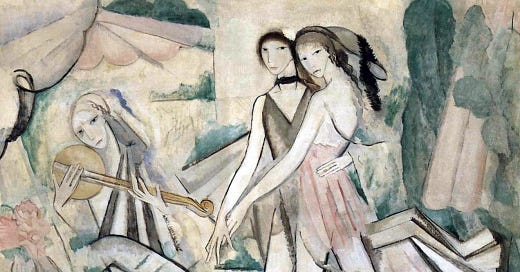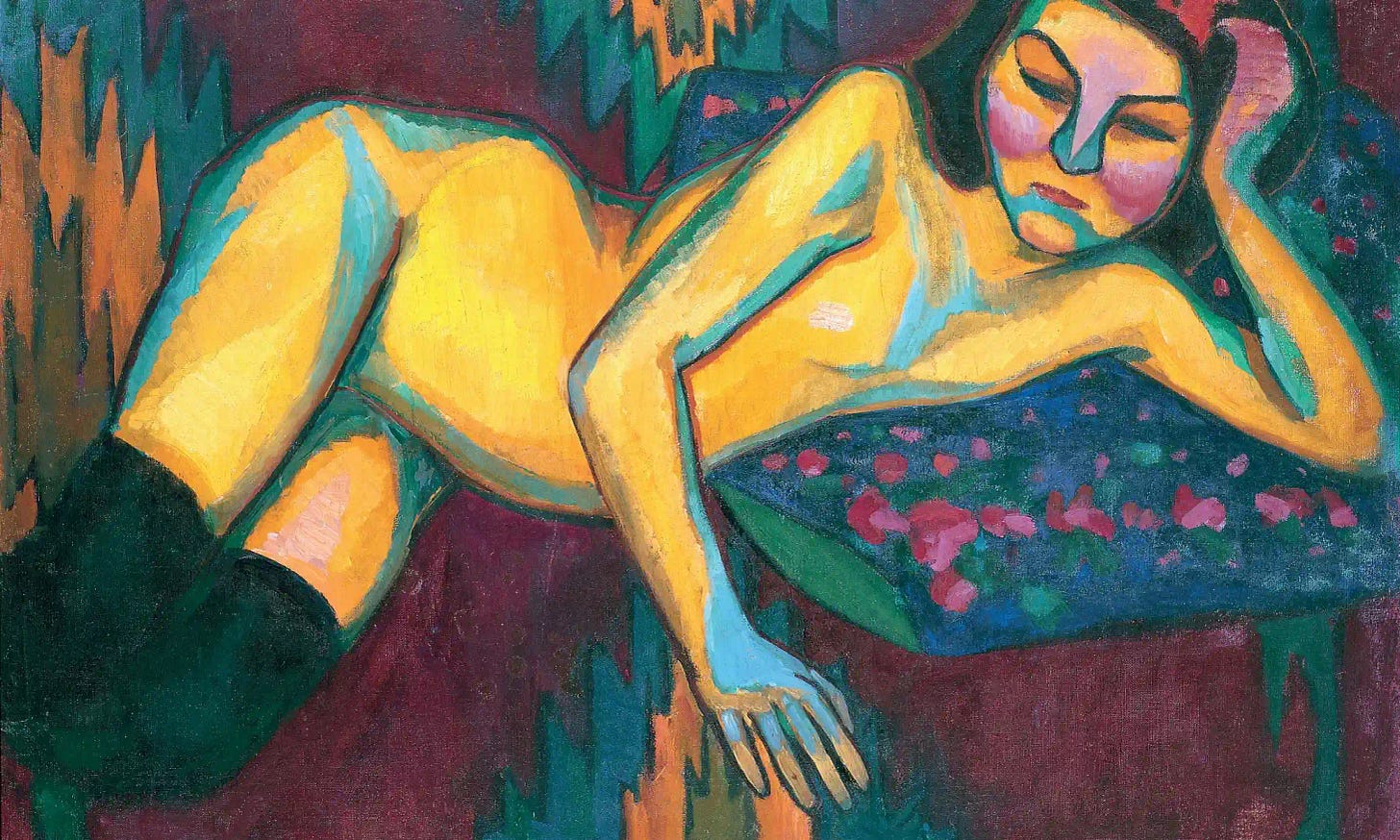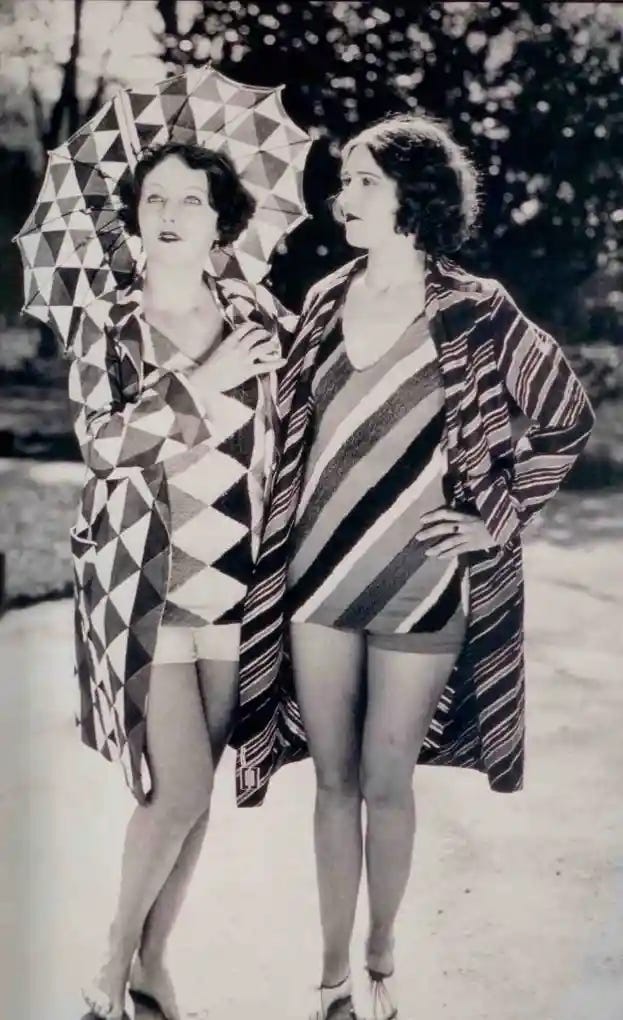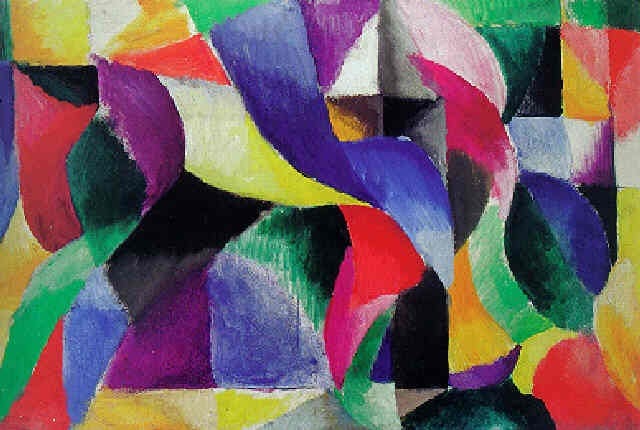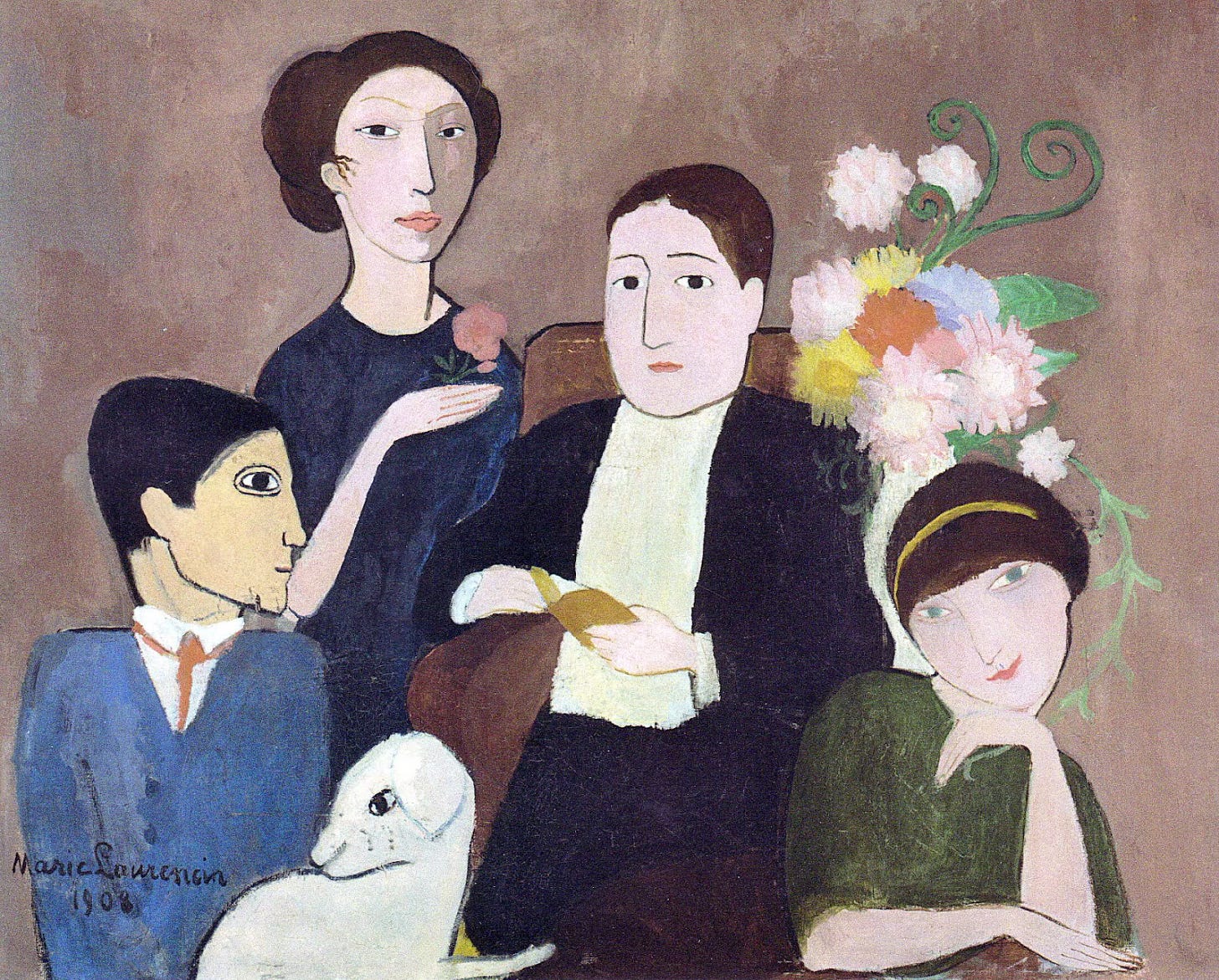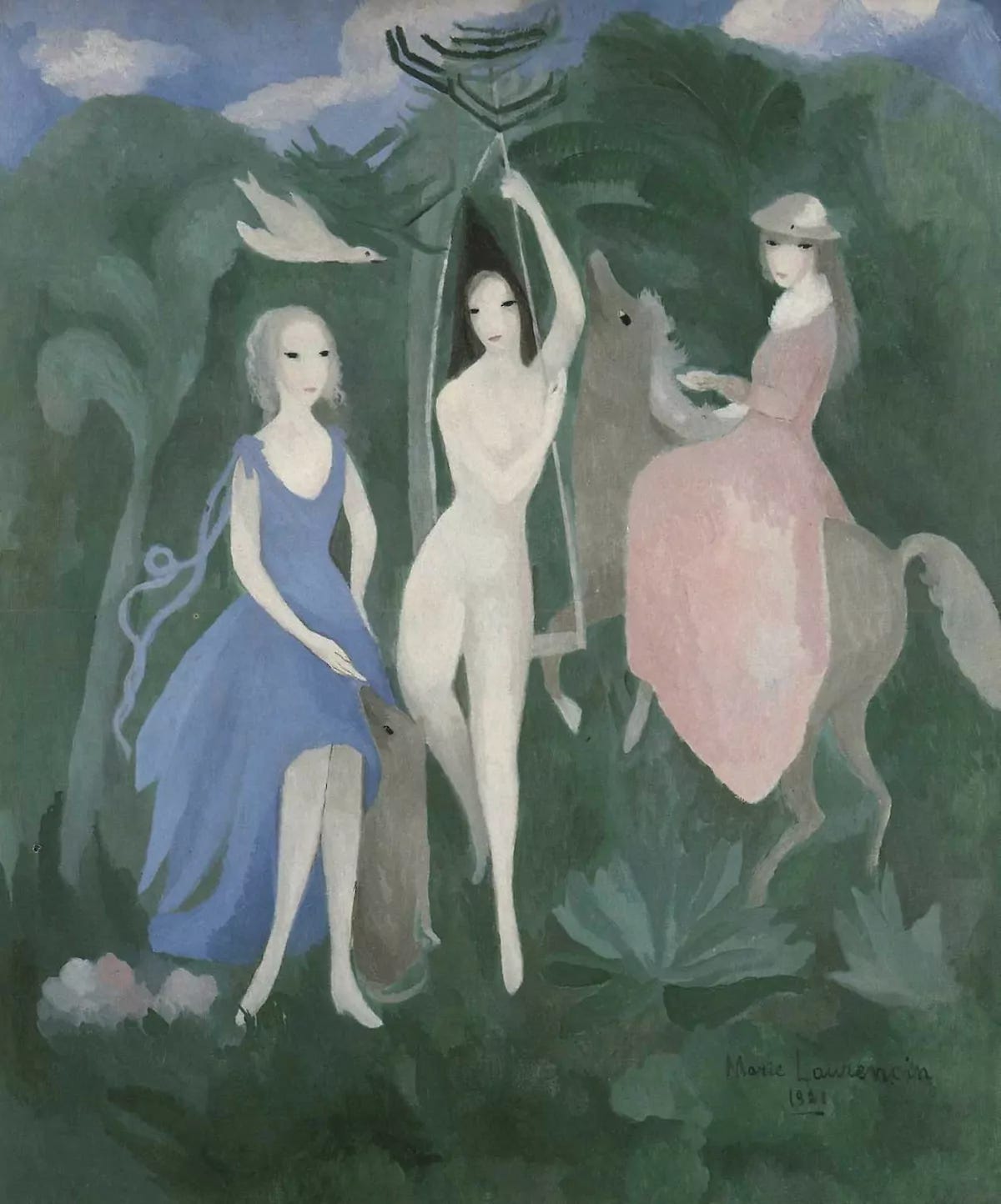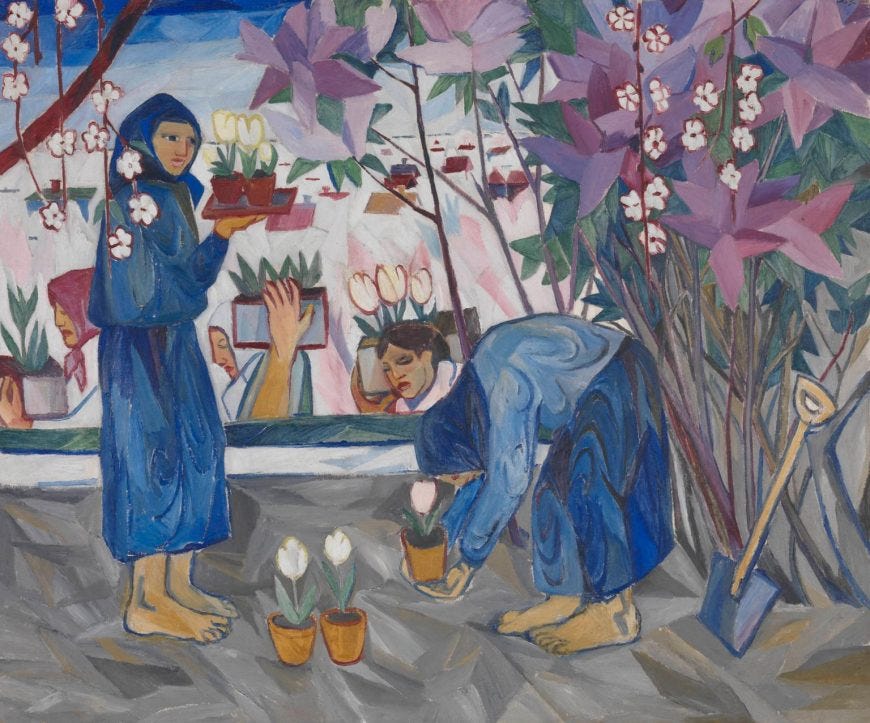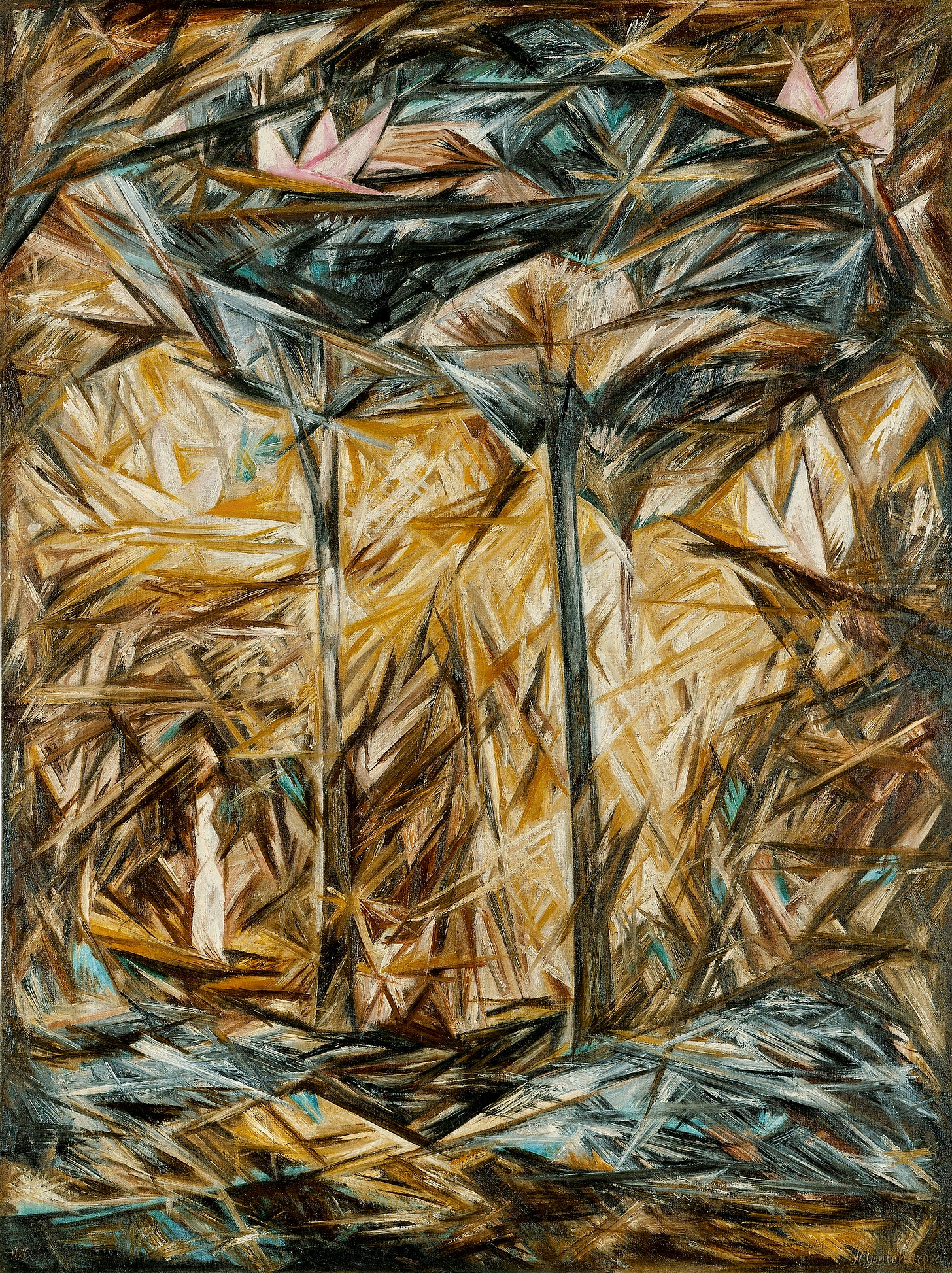Cubism - 3 female artists I wish I'd known about sooner
Cubism, historically dominated by male practitioners, the contributions of female artists, though often underecognized, were pivotal to the evolution of the movement. Here's three.

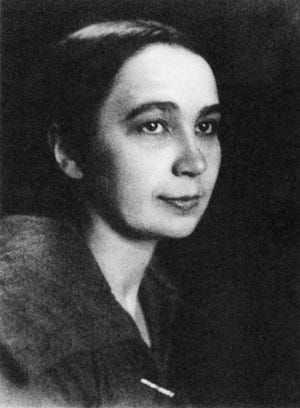
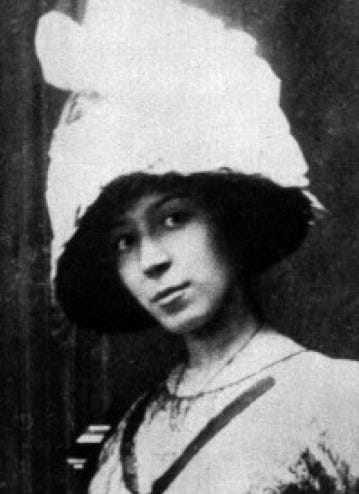
*first, where are we in the art movement timeline?
Sonia Delaunay
Firstly, Sonia Delaunay, whose integration of Cubism into textile design was not only a remarkable aesthetic achievement but also an advancement in the application of fine art to practical design. Her exploration of color and geometric abstraction in visual harmony was a significant evolution of the Cubist language beyond the canvas.
Sonia Delaunay was an artist whose work extended the principles of Cubism beyond the traditional boundaries of the canvas, engaging with the movement's fascination with geometric forms and the integration of multiple perspectives. Born Sarah Ilinitchna Stern in 1885 in Gradizhsk, Ukraine, Delaunay moved to Paris, where she became deeply involved in the city's avant-garde scene.
Her marriage to the French artist Robert Delaunay led to a collaborative relationship that significantly influenced her work. Together, they developed a theory they called Simultaneism, which explored the dynamic interaction of colors and shapes, echoing the Cubist fragmentation of form. Like, “Yellow Nude”, 1908.
Sonia Delaunay's most notable contributions to Cubism were not just in her paintings but also in applied arts. She ventured into textile design, fashion, and set design, showcasing the practical application of Cubist aesthetics. Her simultaneous dresses, for instance, were a groundbreaking fusion of art and fashion, featuring bold, contrasting colors and rhythmic patterns that encapsulated movement and depth despite their flat surfaces.
Her work 'Le Bal Bullier' is a prime example, where the swirling forms and vibrant hues capture the essence of the bustling Parisian dance hall. Similarly, 'Electric Prisms,' with its interplay of light and color, reflects the vibrancy and rhythm of the city.
Delaunay's legacy in the art world is profound, particularly in her contribution to the expansion of Cubism from a purely visual art form to one that influenced the broader cultural domain of design. Her approach to color and geometric abstraction helped to pave the way for later movements such as Abstract Expressionism and even influenced the aesthetics of modern design. Her inclusion in key exhibitions, such as the 1913 Erster Deutscher Herbstsalon in Berlin and the International Exhibition of Modern Art at the Brooklyn Museum, underlines the significance of her work.
Through her vibrant artworks and innovative designs, Sonia Delaunay demonstrated that Cubism could permeate the fabric of everyday life, thereby altering the perception of the movement as confined to the elite art world and making it accessible to a wider public. Her emphasis on color and abstraction continues to inspire artists and designers, sustaining her influence in the realms of both fine and applied arts.
Marie Laurencin
Secondly, Marie Laurencin's oeuvre demonstrates a divergence from the traditional Cubist palette and form. Her work, often featuring figures with softened edges and ethereal hues, provided a counterbalance to the more austere expressions of Cubism, expanding the movement's emotional range and expressive potential.
Marie Laurencin, a notable figure in the Parisian avant-garde and one of the few women associated with the Cubist movement, carved a unique niche for herself with a distinctive style that offers a counterpoint to the conventional characteristics of Cubism. Born in 1883 in Paris, Laurencin's work is renowned for its delicate approach and lyrical interpretation of the Cubist aesthetic.
Laurencin's association with the Cubists came through the Section d'Or group, yet she eschewed the muted color palette and angular geometry typical of Cubism for a more nuanced and personal style. She often painted women, using soft, pastel hues and fluid, curvilinear forms to create a sense of ethereality and romanticism.
One of her most significant works is "Group of Artists" (1911), which portrays prominent figures of the avant-garde, including herself, Picasso, and her partner, poet Guillaume Apollinaire. This painting demonstrates her departure from the typical Cubist style, infusing her figures with a softness and roundness that are quite distinct from the fragmented forms of her male counterparts.
Another exemplary piece is "The Three Graces" (1912), where Laurencin applies a Cubist fragmentation to the composition but does so with a lightness of touch, employing a palette of soft pinks, blues, and greens. The figures are rendered with a sense of fluidity and grace, set against a dreamlike, ambiguous space.
Laurencin's contribution to art extends to her role in the world of ballet and theatre, where she worked as a set and costume designer. Her work for the Ballets Russes in 1924 exemplifies her aesthetic commitments, with designs that emphasize femininity and grace. Like “Elegant Ball” from 1910.
Despite being overshadowed by her male contemporaries, Laurencin's work has been reassessed over time, and she is now celebrated for her unique contributions to Cubism and modern art. Her insistence on a personal style that fused elements of Cubism with a distinctly feminine sensibility has left an indelible mark on the art world, influencing subsequent generations of artists and expanding the narrative of the Cubist movement. Her legacy is one that highlights the capacity of Cubism to be interpreted and expressed through a variety of lenses, challenging and enriching the movement's dialogue with new voices and perspectives.
Natalia Goncharova
Finally, Natalia Goncharova, whose practice reflected the intersection of Russian avant-garde sensibilities with Cubist constructs, represents an important node in the movement's diffusion across Europe. Her engagement with folk motifs within a Cubist framework contributed to a dialogue between the movement and Russian cultural narratives.
Natalia Goncharova, a pivotal figure within the avant-garde movement in Russia, demonstrated a profound engagement with Cubism, which she adapted and integrated with her exploration of Russian folk traditions. Born in 1881 in the Tula Province of Russia, Goncharova's work is marked by a bold foray into the intersections of modern European artistic trends and the visual language of her native cultural heritage.
Goncharova's works are characterized by their vibrant energy and innovative synthesis of styles. A prominent example of her Cubist period is "Cyclist" (1913), where the dynamic motion of the subject is conveyed through the fractured surfaces and interlocking planes typical of Cubism, yet the figure maintains a solidity and volume that speak to Goncharova's unique interpretation of the style. The painting's robust forms and the sense of movement are reflective of the artist's intent to capture the speed and mechanical power of modern life.
Her piece "The Forest" (1913) is another testament to Goncharova's Cubist influence, featuring a dense composition of overlapping shapes and a palette that breaks away from the earthy tones common in Cubist works of that era, infusing the canvas with a sense of depth and vitality that is distinctly her own.
In addition to painting, Goncharova's work in set and costume design for productions like "Le Coq d'Or" (The Golden Cockerel) brought her Cubist vision into the performative space, contributing to the broader diffusion of Cubist principles in design and theater.
Goncharova's impact on the art world extended beyond her lifetime, as she laid the groundwork for the acceptance and integration of modernist aesthetics in Russian art. Her bold use of color, her blending of Cubist techniques with Russian iconography, and her commitment to pushing the boundaries of contemporary art practices solidified her position as one of the most innovative artists of her time. Her legacy endures in the way she bridged the gap between East and West, traditional and modern, and in how she expanded the scope of Cubism to embrace a more diverse and global perspective.
Their legacies, each distinct, challenge the conventional narratives of Cubism and offer a broader understanding of the movement's scope. The academic consideration of these artists is essential not only for a more comprehensive history of Cubism but also for an appreciation of the multifaceted ways in which the Cubist aesthetic was interpreted and advanced.


